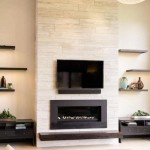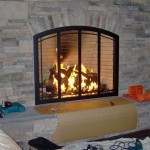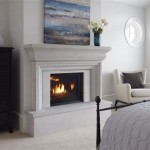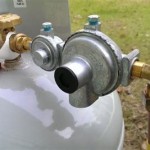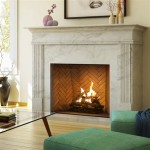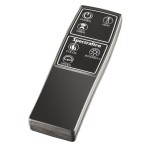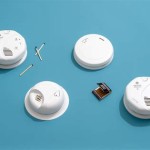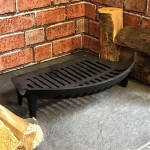Fireplace Insert Removal: A Comprehensive Guide
Fireplace inserts are valuable additions to a home, providing supplemental heating and aesthetic appeal. However, circumstances may arise where removal becomes necessary. This could be due to upgrading to a newer model, switching to a different heating system, structural repairs to the fireplace, or simply aesthetic preference. Removing a fireplace insert is a complex process that requires careful planning, specialized tools, and adherence to safety protocols. Improper removal can lead to damage to the fireplace, the insert itself, surrounding structures, or, most importantly, personal injury. This article provides a detailed guide on the steps involved in safely and effectively removing a fireplace insert.
Assessing the Situation and Preparing for Removal
Before initiating any removal process, a thorough assessment of the situation is crucial. This involves several key considerations.
First, identify the type of fireplace insert. Inserts come in various fuel types, including wood-burning, gas, and electric. Each type requires specific handling procedures. Wood-burning inserts will generally have a simpler removal process once the unit is cool and the ash is removed. Gas inserts, on the other hand, require disconnecting gas lines, a task best left to a qualified professional. Electric inserts require disconnecting the electrical supply.
Secondly, examine the insert's installation. Note how the insert is secured within the firebox. Some inserts are simply placed within the existing fireplace opening and connected to a chimney liner, while others may be bolted or otherwise fastened in place. Understanding the fastening method is essential for safe removal.
Thirdly, check the chimney liner. The liner is critical for venting exhaust gases. It is often connected to the insert. Its removal may be necessary along with the insert or in preparation for installing a new one. The condition of the liner should be assessed as it might be damaged or deteriorated.
Fourthly, gather necessary tools and safety equipment. Essential tools may include wrenches, screwdrivers, pry bars, work gloves, safety goggles, dust mask, and potentially a reciprocating saw for cutting any stubborn fasteners or components. A furniture dolly or similar device is also recommended for moving the heavy insert once it is removed from the fireplace.
Finally, ensure the work area is properly prepared. Cover the floor around the fireplace with drop cloths to protect it from scratches and debris. Clear the area of furniture and other obstructions to provide ample workspace. Good ventilation is essential, especially when dealing with ash or dust from a wood-burning insert.
The Removal Process: Step-by-Step Guide
The actual removal process involves a series of steps. While the specific details may vary depending on the type and installation of the insert, the general approach remains consistent.
The first step is to disconnect the insert from its fuel or power source. For gas inserts, this MUST be done by a qualified gas technician or plumber. The gas supply should be turned off at the meter, and the gas line disconnected from the insert. For electric inserts, turn off the circuit breaker that supplies power to the insert. Unplug the insert from the electrical outlet. For wood-burning inserts, allow the fire to completely burn out and the insert to cool down completely. Remove all ash and debris from the firebox.
The second step involves disconnecting the chimney liner. The liner is usually connected to the insert with a clamp or adapter. Loosen the clamp and carefully detach the liner from the insert. If the liner is fixed in place or if it is difficult to detach, it may be necessary to cut it using a reciprocating saw. Care should be taken not to damage the chimney or surrounding structures during this process. It may be helpful to have an assistant hold the liner as it is being detached to prevent it from falling down the chimney.
The third step addresses any fasteners securing the insert. Inspect the insert for any screws, bolts, or other fasteners that are holding it in place. Remove these fasteners using the appropriate tools. Some inserts may be cemented into place using high-temperature mortar. If this is the case, carefully chip away the mortar using a chisel and hammer. A pry bar may be needed to gently loosen the insert from the mortar bed.
The fourth step is the actual removal of the insert from the firebox. This is usually the most physically demanding part of the process, as fireplace inserts can be quite heavy. Use a pry bar to gently lift and slide the insert out of the firebox. Work slowly and carefully to avoid damaging the fireplace or the insert itself. If the insert is too heavy to lift, use a furniture dolly or similar device to assist with the removal. Position the dolly in front of the firebox and slide the insert onto the dolly. Once the insert is securely on the dolly, it can be wheeled to its new location.
The final step involves cleaning up the work area. Remove all debris and dust from the fireplace and surrounding area. Dispose of any ash or other waste materials properly. Inspect the fireplace for any damage and make any necessary repairs. If a new insert will be installed, prepare the fireplace opening according to the manufacturer's instructions.
Safety Considerations and Potential Problems
Safety is paramount throughout the entire fireplace insert removal process. Several potential hazards must be addressed to ensure a safe and successful outcome.
Firstly, the weight of the insert poses a significant risk. Fireplace inserts can weigh hundreds of pounds. Attempting to lift or move a heavy insert without proper equipment or assistance can lead to serious injuries, such as back strains, muscle pulls, or even broken bones. Always use a furniture dolly or other suitable lifting device, and enlist the help of at least one other person.
Secondly, dealing with gas lines requires extreme caution. As previously mentioned, disconnecting a gas line should only be performed by a qualified professional. Improperly disconnecting a gas line can result in a gas leak, which can lead to explosions or carbon monoxide poisoning. Ensure that the gas supply is completely shut off and that the gas line is properly capped off before proceeding with any other work.
Thirdly, potential exposure to dust and debris is a concern. Wood-burning inserts can accumulate large amounts of ash and soot over time. This can be hazardous to breathe in. Wear a dust mask and safety goggles to protect your lungs and eyes. Keep the work area well-ventilated to minimize dust levels.
Fourthly, damage to the fireplace or surrounding structures is a possibility. Careless removal can result in scratches, dents, or cracks in the fireplace brickwork or mantel. Use caution when prying or lifting the insert, and avoid using excessive force. If any damage does occur, repair it promptly to prevent further deterioration.
Finally, difficulty disconnecting the chimney liner can present a challenge. The liner may be corroded or fused to the insert, making it difficult to detach. In such cases, it may be necessary to cut the liner using a reciprocating saw. Exercise caution when using power tools near the chimney, and be sure to wear safety goggles to protect your eyes from flying debris.
In conclusion, removing a fireplace insert is a multi-faceted project. By carefully assessing the situation, following a detailed removal plan, and prioritizing safety, this task can be completed successfully. If any uncertainty exists or if dealing with gas lines, it is always recommended to consult with a qualified professional.

Removing An Old Woodstove Fireplace Insert Young House Love

Wood Stove Fireplace Insert Removal And Cleaning

How To Remove A Fireplace Insert With S Wikihow

How To Remove A Fireplace Insert With S Wikihow

Removing An Old Woodstove Fireplace Insert Young House Love

How To Remove An Old Fireplace Surround Merrypad

On The Road With Heat N Sweep Pre Fab Removal New Fireplace Insert

Removing An Old Woodstove Fireplace Insert Young House Love

How To Remove A Fireplace Insert With S Wikihow

Fireplace Insert Removal Costs Considerations 2024 Data Angi

